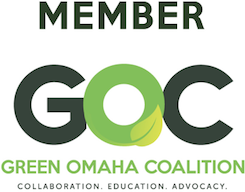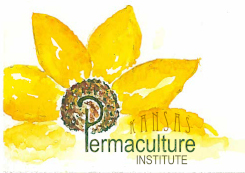August 25-26, 2015, Emporia, Kansas
Gabe Brown: A Simple Man's Take on the Current Production Model
- Prior to European contact, the central plains were tallgrass prairie, a very diverse, healthy & sustainable ecosystem.
- Tilling & monoculture destroyed all that for a few year's gain.
- Less diversity -> less photosynthesis -> less liquid carbon -> less carbon storage -> less water storage
- We created weather extremes where previously there was relative stability.
- Livestock on feedlots create problems that can't be addressed in that context.
- The FSA & RMA (but notably not NRCS) propagate this dysfunctional status quo.
- Mycorrhizal fungi are the most misunderstood aspect of agriculture.
- Capped soil is "basically a hydroponic system without the water."
- Low nutrient -> synthetic fertilizer -> weeds -> herbicides -> mineral deficiencies -> fungal diseases -> fungicide
- Pesticide -> decline in pollinators -> decreased production
- Pesticide -> decline in predators -> increased pests
- The current production model is all about killing.
- What matters is how you see things, not how you do them. Regenerative management requires ecosystem understanding.
- use the least possible amount of mechanical disturbance.
- keep "armor" on the soil: crop residue and cover crops.
- maximize diversity: what he calls the "chaos garden," intercropping cover crops with one or more cash crops
- Keep living roots in the soil as much of the year as possible to optimize solar collection: seed anything you don't currently have growing
- Animal impact: let livestock do what they do best, which is mob grazing.
- Gabe's rotation: cow-calf pairs, stockers, sheep, pigs, chickens. Pigs are the most profitable.
- Topsoil depth using this strategy has increased form 3" to 14" from 1993 to 2013.
Dr. Christine Jones: Soil Carbon: the Mycorrhizal connection
- Fencerows are the last refuge of diversity & helathy soil on "conventional" farms.
- Light hitting bare soil creates heat, but photosynthesis is a cooling (endothermic) process. The faster a leaf is photosynthesizing, the cooler it is relative to the surrounding air.
- Plants don't "take nutrients from the soil," they make soil (at any rate, functioning polycultures do).
- Plants quickly deplete nutrients in their immediate surroundings.
- Continued nutrition comes from the ecosystem of microbes that mine inorganic nutrients when soil is made.
- So nutrients are leaving the farm with crops, but thousands of tons of inorganic nutrients are in the ground.
- Nutritional needs are met by soil microbes -- the world's most productive ecosystems have no nutrient inputs, and in fact produce less if inputs are applied to them.
- Some plants (notably brassicas) don't support mycorrhizae, so don't monocrop with those. Sunflowers, squash, and peas support mycorrhizae more than average.
- The Spanish explorers found 3-sisters cropland stretching a mile wide and 5 miles long.
- Endomycorrhizae cannot be seen in photos due to being inside roots, so all photos of mycorrhizae are of ectomycorrhizae.
- Today's food is less nutritious (in minerals) than ever in history.
- notably in copper, which is the most common catalyst for biological reactions, so copper deficiency causes malnutrition
- Magnesium deficiency is so common in Australia, the ERs put patients on Mg drip before the paperwork is even started.
- This is coupled with higher chemical residues on produce than ever: People who eat more industrially-grown fruits & vegetables consume more industrial chemicals than those who eat less produce!
- The official explanation is that increased yield dilutes nutrients, but healthy soil grows nutritious crops.
- Calcium deficiency can occur even on limestone-derived soil if the soil is not healthy.
- Soil is dirt that's been in contact with plant roots. Plants are what makes soil. Bare soil destroys it.
- Photosynthesis -> roots & microbes -> soil
- This was understood prior to 1940 and the Green Revolution. Misunderstanding since then: soil -> plants -> animals
- Chemical soil tests are bogus because plants use a totally different mechanism to get their nutrients!
- 95-90% of nutrient acquisition is mediated by microbes.
- 60-90% of nitrogen applied to soil is not taken up by plants. Even worse for phosphorus.
- Endomycorrhizae are generalists and will link up to any roots, but ectomycorrhizae are species specific (most work only with trees)
- Composting does not create humus! Just humic acid and other good stuff, but humus is more desirable because it's much more stable in the long term.
- Book recommendation: The Farm as Ecosystem
- Compost recipe recommendations to achieve 25-50-75 NPK
- sticks, food scraps, leaves
- sawdust, food scraps
- wood chips and manure
Field exercises: 1953 Rd. M
- John Lundgren: "exercise in predation"
- Cover crop polyculture: sunflower, daikon, Sudan grass, lots of grass, mostly crabgrass
- Jones & Brown's recommendation: mixed grazing ("flerd"), seed winter rye, vetch, daikon
- Dr. Jones recommends against chisel plow: clay soil will just smear and seal the channels, and the trench will go anaerobic.
- Abe Collins: soil infiltration
- penetrometer is not very accurate; originally developed for determining whether the military could drive heavy vehicles over soft ground.
- typically find hardpan 8" deep in agricultural fields. Theoretically roots can't exceed 300 psi to break hardpan.
- infiltration rings: test how long it takes 1" of water to disappear into the ground.
- keep adding 1" at a time to find the saturation point.
- "terrace channel" is a regional name for a swale slightly off contour
- Collins feels mechanical contouring of the landscape is a mistake because it disrupts the soil profile; focus instead on soil aggregates.
- Collins's suggestion: rye & vetch cover crop in fall, soy in spring.
- penetrometer is not very accurate; originally developed for determining whether the military could drive heavy vehicles over soft ground.
Jonathan Lundgren: Recap of field activities
- Neonicotinoid insecticides are now widespread in organic crops and non-crop plants like milkweed.
- RNAI genetic pesticide interferes with RNA-creating proteins; lots of potential to inadvertently affect unintended species, e.g. bees.
- DDT was initially found to be safe because we asked the wrong questions during testing. We're still asking the wrong questions.
- Transformational change doesn't come from the top down.
- Lundgren is starting a nonprofit research company to serve farmers and beekeepers.
- Needs everyone's support: Ecdysis, Blue Dasher Farm, in SD. (seems to be DOA)
Gabe & Christine on grazing land
- Abe Collins says the ground has massive compaction, 600-900 psi with a pan at 8-9", recommends subsoiling 2x in one year, above and below the pan.
- But Christine says keyline plowing has not delivered on its promise in Australia. Grazing is more dependably effective. Recommends adding alfalfa & clover to the existing mix.
- "I farm a lot of heavy clay soil, and you'll wear out a good tractor doing work that ryegrass will do for you in 8 months."
- After intense grazing, what follows is legumes (clover, etc.), early succession.
- The Flint Hills are overburned! --audience member Pete Ferrell. Christine confirms aboriginal burning was very different in quality & quantity than European burning.
- All commercial seed in Australia is treated with fungicide. Saved (untreated) seed develops mycorrhizal associations much more quickly.
Gabe: Regenerating Thin Stands with Fall Season Biennials
- Winter triticale & hairy vetch primarily, radishes, rye, Sudan grass
- Mob grazing with cow/calf pairs, leaving the bottom 4" or so of grass intact
- Reseed with diverse (20+ species) seed mix
- Infiltration rate down to 9 seconds, 2nd inch 16 seconds, down from over an hour at the start!
- Rye & Sudan grass very effective (with grazing) at suppressing weeds.
- Palatability of hay: winter wheat > triticale > rye
Gabe: The Next Generation, a case study on how to pass on a farm to your heirs
Family Limited LLP includes all ranch assets (in North Dakota)
- transition of ownership is 5% per year over 20 years
- On average 14% of food dollar goes to the farmer, so set up an LLC for direct marketing. The LLC purchases crops from the LLP and resells them, with profit for each company.
- Average cost to raise a cow $1231, sold to the LLP for $2000, sold retail for $856 profit.
- Livestock dogs are more profitable than cattle & sheep.
- Hogs are even more profitable at $1181/hog retail profit, $1347 total profit.
- Eggs: net profit per week of $701 (seasonal)
- see photo at right: multiple income streams, all unsubsidized.
- Built their own abattoir, working on a poultry processing facility.
- Downsizing land because understocked: intensive stacking of enterprises can support a family on 20 acres, maybe a little more.
- Got here because of bad crop years farming conventionally, lost all crops, started again without synthetics.
- Interns are contractors, not employees, learning to run their own farms so they can become independent.
Christine: Pasture cropping in Australia
- Sow into dormant warm-season perennial grass in the fall, grow over winter (summer is too hot).
- Case study: Colin Seis in NSW planted oats into bare, saline soil.
- "When stock come onto pasture, you shouldn't be able to see their knees, and if you can see their feet when they're coming off, it's too short."
- Both carbon & nitrogen dramatically increased, as well as all other nutrients, including trace elements.
Christine & Gabe: final Q&A
- Transitioning from synthetics: recommend the Haney test. Scale down synthetics 50% at a time. Try it for 5 years before going back.
- Fuller's farm has exteremely high phosphorus due to nearby feedlots. Recommend exporting alfalfa.
- Humic molecule has a fixed ratio of nutrients no matter what, including aluminum, which is toxic.
- 60% carbon, 6-8% nitrogen, 1-2% phosphorus, .8-1.5% sulfur, 30% aluminum & iron.
- Soil microaggregates create anaerobic conditions for nitrogen fixation, even when no legumes are present.
- Grasses put a lot of energy into soil, but trees put it primarily into wood. Lignification is very similar to soil building.
- but trees & grasses benefit each other via the mycelial net.
- Log in to post comments





Comments